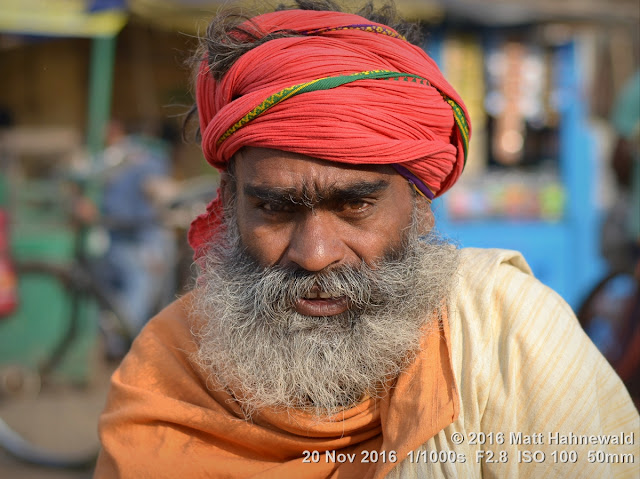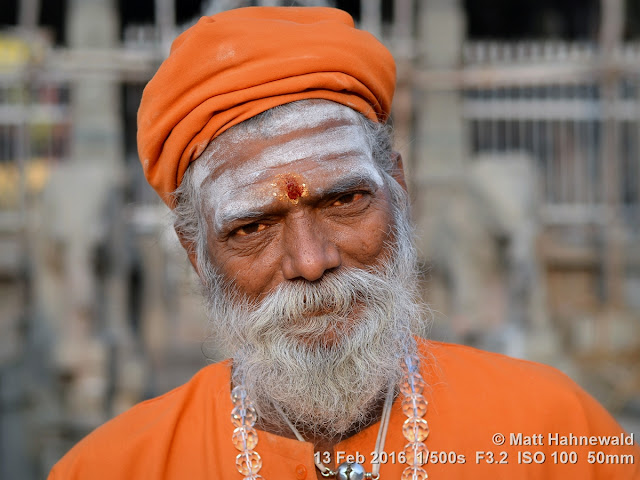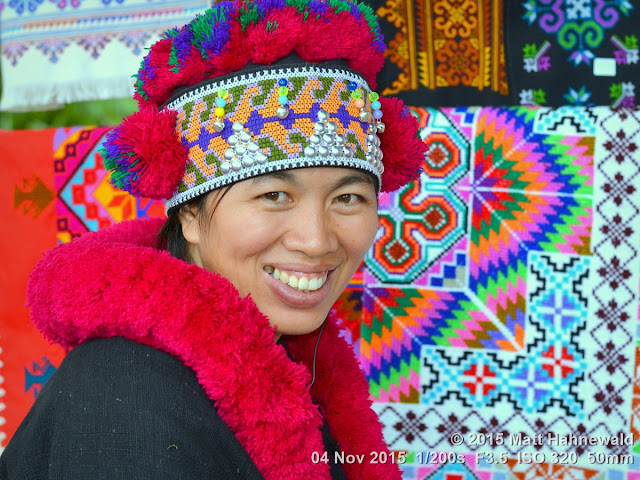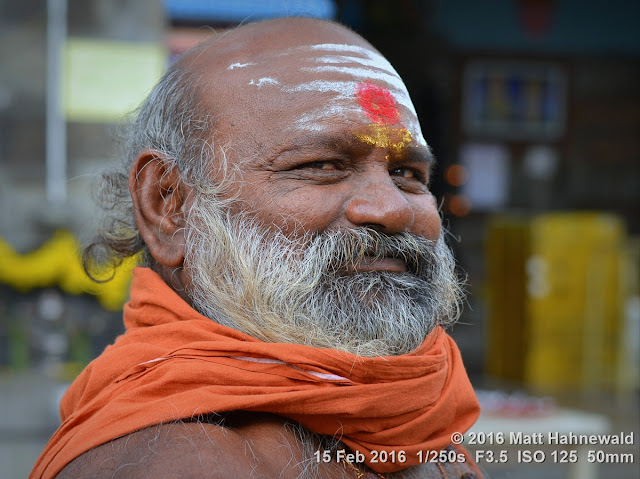The facial views in portrait photography derive from portrait painting (e.g. Van Dyck’s Charles I in Three Positions); it is what portion or angle of the face is showing towards the lens, the photographer, and the viewer of the photograph. For interactive street portraits
with eye contact, there are only two main types of facial views: (i) the full-face view (including the seven-eighths view subvariant), and (ii) the three-quarter view (including the two-third view subvariant).
The (i) full-face view is produced when the subject is facing directly into the camera, and his nose is pointing straight towards the lens. In this view, one can see equal amounts of
both sides of the subject’s face, both ears are fully visible.The proportional full-face view is useful when one wants to show the symmetry of a subject’s face, or when one wants to convey a more assertive, dominant, or powerful attitude. The full-face view may support the yang aspect of a person (e.g. his dignity, power, masculinity, sobriety, cognition).
The slightly asymmetrical seven-eighths view subvariant of the exactly symmetrical full-face view occurs when the subject is turning his head just a tiny tad away from the camera, still maintaining eye contact, and both of the subject’s ears are still visible.
The (ii) three-quarter view aka half-profile view of the face is produced when the subject’s face is turned away from the camera until the far ear just disappears. It is called a three-quarter view because about three quarters of the subject’s face are visible. It is recommended that the face should not be turned so far that the nose extends past the line of the cheek. Also, it is important that the eye on the far side of the face be contained within the face by a small strip of skin visible along the far temple.
The three-quarter view is useful for revealing the shape and contours of the subject’s face. It is also more demure and less assertive than a full-face view. The three-quarter view may support the yin aspect of a person (e.g. her grace, mobility, femininity, playfulness, emotion).
The two-third view subvariant of the three-quarter view occurs when the subject has continued to turn her head until the tip of the nose is almost touching the outline of the cheek on the far side (preferably, without the nose extending beyond the line of the cheek, which wouldn't be very flattering).
Note below the subtle psychological commonalities and differences between the three-quarter view and the seven-eighths view, but remember: the map is never the territory...
"The face is an ongoing parade of expressions."
(Marianne LaFrance: Why Smile?)
High-res portrait photographs with full exif data, precise geotags and technical details in Matt Hahnewald's














No comments:
Post a Comment